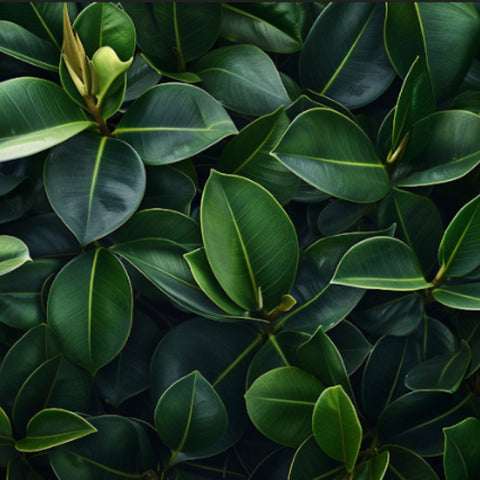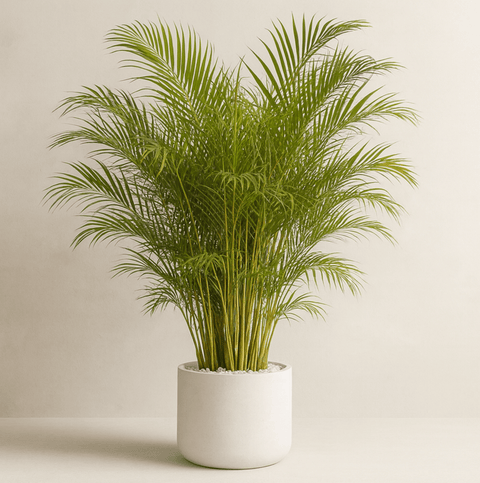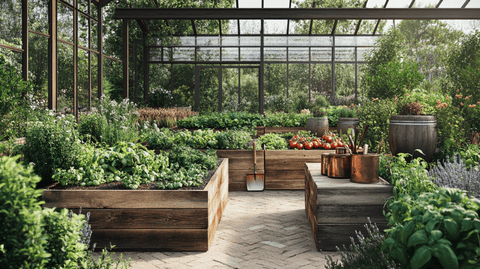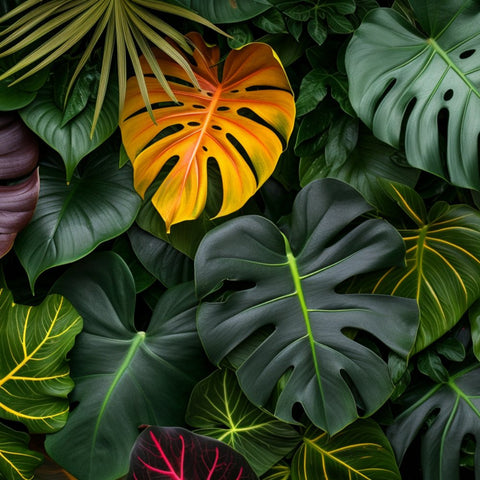Blog Post : Discover the Beauty and Benefits of the Rubber Plant
Introduction
Welcome to our blog post on the wonderful rubber plant! Known for its popularity as a houseplant, this versatile and aesthetically pleasing plant is a must-have for any indoor environment. In this article, we will delve into the various aspects of the rubber plant, including its origins, appearance, growing conditions, care and maintenance, propagation methods, and the benefits it offers. So, let's dive in and explore the world of the rubber plant!
Rubber Plant Overview

The rubber plant, scientifically known as Ficus elastica, is a tropical plant native to Southeast Asia. It is commonly referred to as the rubber tree or rubber fig. With its large, glossy leaves and vertical growth habit, the rubber plant adds a touch of elegance and lushness to any space. What sets this plant apart is its ability to thrive in both low light and bright indirect light conditions, making it an ideal choice for those looking to add a bit of greenery to their homes or offices.
One of the most enticing features of rubber plants is the wide variety of leaf colors and shapes available in different cultivars. While the classic rubber plant showcases deep green leaves with a leathery texture, there are cultivars with variegated patterns, including cream, yellow, pink, or red hues. Additionally, some rubber plant varieties have elongated, lance-shaped leaves, while others display broader and rounder leaf shapes, providing a diverse range of options to suit various interior design preferences.
Growing Conditions
Ideal Lighting Requirements
When it comes to lighting, rubber plants thrive in bright, indirect light. While they can tolerate lower light conditions, they may not grow as vigorously or develop their characteristic lushness. Placing your rubber plant near a north or east-facing window is an excellent choice, as it allows them to receive the bright, filtered light they prefer without direct exposure to the intense afternoon sun.
Suitable Temperature and Humidity
Rubber plants thrive in average room temperatures ranging from 60-75°F (15-24°C). However, they can tolerate slightly cooler temperatures, but sudden temperature drops should be avoided, as they may lead to leaf drop or a decline in overall health. Maintaining a consistent temperature is crucial for the optimal growth of rubber plants.
In terms of humidity, rubber plants prefer moderate to high humidity levels. If the air in your home or office tends to be dry, especially during the winter months when heating systems are in use, consider using a humidifier or placing your plant on a humidity tray filled with water and pebbles to provide the moisture it craves.
Soil Type and Watering Regimen

When it comes to soil, rubber plants prefer well-draining potting mix to prevent waterlogged roots. A mixture containing peat moss, perlite, and sand is ideal for ensuring proper drainage while retaining adequate moisture. Regular potting soil can also be mixed with sand or perlite to achieve the desired consistency.
Watering your rubber plant can be a bit tricky, as it requires a delicate balance. Over-watering can lead to root rot, while under-watering can cause leaf drooping and a decline in overall health. It is essential to keep the soil slightly moist but not soggy. A good rule of thumb is to allow the top inch of soil to dry out before watering again. This ensures that the roots have access to oxygen and prevents waterlogged conditions.
Care and Maintenance
Frequency and Method of Watering
When watering your rubber plant, ensure that you water thoroughly, allowing water to flow through the drainage holes to flush out any accumulated salts or minerals. This helps prevent salt buildup in the soil, which can be harmful to the plant. Once the excess water drains out, empty the saucer to avoid water sitting in it, as this can lead to root rot.
It's important to note that your watering frequency may vary depending on various factors such as humidity levels, temperature, and pot size. Check the soil moisture regularly by gently inserting your finger into the soil up to the first knuckle. If it feels dry, it's time to water your rubber plant.
Fertilization
To promote healthy growth and vibrant foliage, regular fertilization is necessary for rubber plants. Use a balanced houseplant fertilizer with equal amounts of nitrogen, phosphorus, and potassium. Feed your rubber plant every few weeks during the growing season (spring and summer), following the instructions on the fertilizer package. During the dormant season (fall and winter), reduce the frequency of fertilization to once a month or every six weeks.
Pruning

Pruning your rubber plant is essential to maintain its shape and remove any damaged or diseased leaves. You can also prune to control the overall size or shape of the plant. When pruning, always use clean, sharp pruning shears to avoid damaging the plant. Make clean cuts just above a leaf node to encourage new growth. Remember to wear gloves as the rubber plant's sap can be mildly irritating to the skin.
Pests and Diseases
While rubber plants are generally resilient, they can still be susceptible to certain pests and diseases. Common pests that can affect rubber plants include spider mites, mealybugs, and scale insects. Regularly inspect your plant for any signs of infestation, such as sticky leaves, webbing, or visible insects. If you notice any pests, treat them with organic or chemical solutions according to the instructions on the product.
In terms of diseases, rubber plants can develop root rot if over-watered or placed in poorly draining soil. Powdery mildew and leaf spot diseases can also occur in humid conditions or if there is poor air circulation around the plant. To prevent these issues, ensure proper watering practices, improve air circulation, and maintain a clean environment by removing dead leaves or debris.
Propagation

Methods of Propagation
There are a few methods you can use to propagate your rubber plant, including stem cuttings and air layering. Stem cuttings are the most popular and straightforward method, while air layering may require a bit more skill and patience.
Stem Cutting Propagation

To propagate your rubber plant using stem cuttings, follow these simple steps:
- Select a healthy stem with several leaves, ensuring it is at least 4-6 inches long.
- Using sharp, clean pruning shears, make a diagonal cut just below a leaf node.
- Remove any leaves from the lower portion of the cutting, leaving only a few leaves at the top.
- Dip the cut end of the stem in rooting hormone powder to encourage root development.
- Plant the cutting in a small pot filled with moistened, well-draining soil.
- Cover the pot with a plastic bag or place it in a propagator to create a humid environment.
- Keep the soil consistently moist, but not overly wet.
- After a few weeks, roots should start to develop. Once the cutting has established roots, you can transfer it to a larger pot with regular potting soil.
Timeline and Expectations
Root development can take around 4-6 weeks, depending on the temperature and growing conditions. Once the roots have formed and the cutting is potted in regular soil, you can expect to see new growth within a few weeks. From there, the plant will continue to grow and thrive, just like any other rubber plant.
Benefits and Challenges of Rubber Plants
Air-Purifying Qualities

One of the significant benefits of owning a rubber plant is its air-purifying qualities. Rubber plants have been found to remove common indoor air pollutants, such as formaldehyde and volatile organic compounds (VOCs), making them an excellent choice for improving indoor air quality. In addition to their aesthetic appeal, they contribute to creating a healthier and more pleasant living or working environment.
Potential Challenges
While rubber plants offer numerous benefits, there are some potential challenges to be aware of. Rubber plants can be sensitive to temperature changes, so it's important to avoid placing them near drafts or in areas prone to significant temperature fluctuations. They are also sensitive to excess watering, so it's crucial to ensure proper drainage and avoid over-watering, as this can lead to root rot.
However, with proper care and attention, these challenges can be easily overcome, allowing you to fully enjoy the beauty and benefits of having a rubber plant in your home or office.
Conclusion
In conclusion, the rubber plant is a versatile and visually appealing houseplant that offers numerous benefits for indoor environments. From its glossy leaves and vertical growth habit to its air-purifying qualities, the rubber plant is a popular choice among plant enthusiasts and interior designers alike. By following the proper growing conditions, care, and maintenance tips, you can enjoy a thriving rubber plant that adds a touch of elegance to your space. So why not give this beautiful and low-maintenance plant a try? Just remember, a little love and attention go a long way in creating a lush and vibrant rubber plant!






























Comments (0)
There are no comments for this article. Be the first one to leave a message!